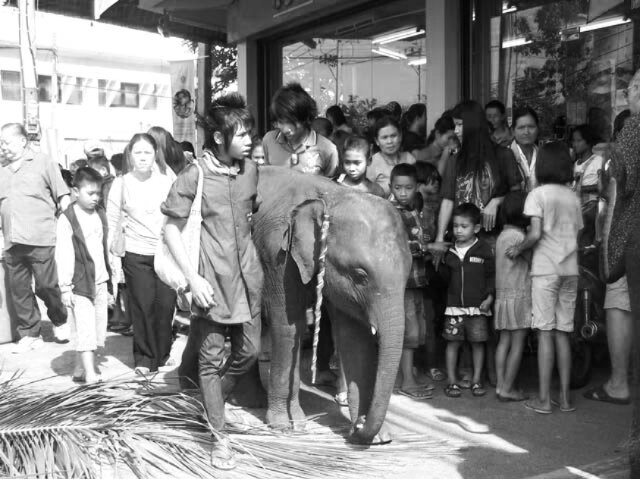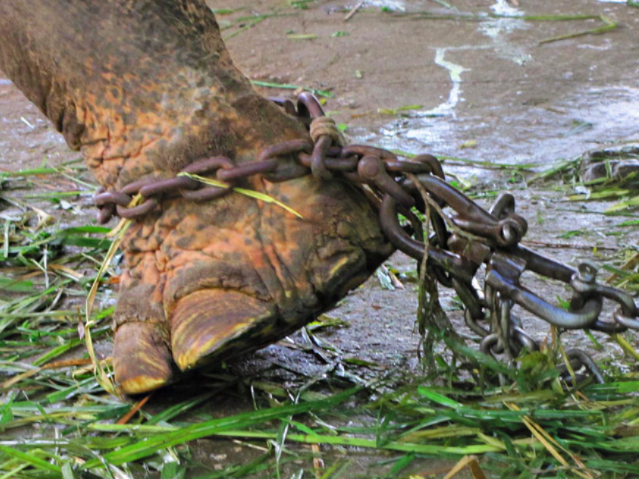Why We Are Needed
The Reality For Elephants in Thailand
For centuries, elephants were revered in Thailand. Noted for their intelligence and warm nature, they were domesticated for work and warfare. One hundred years ago there were an estimated 100,000 Asian elephants in Thailand alone. Today, their population has dropped down to about 3,500. This is in part due to the tourism and logging industries.
Tourism
Today, elephants are used as a tourist attraction. With elephants being marched through city streets, used to give rides, and posing for photos with tourists, the number of captive elephants has exceeded that of wild elephants in Thailand. Not only this, but the vast majority of captive elephants are living in suboptimal working conditions. Elephant camps cater to tourists and use elephants irresponsibly, forcing them to provide rides in adverse weather or to perform gymnastic displays for “entertainment.”
Logging
Thailand’s tradition of using elephants in industry ended in 1989 following the large floods that, in part, were an outcome of irresponsible logging. The government’s cancellation of logging concessions put thousands of elephants, and the mahouts who owned them, out of work. The mahouts had few options to support their families or feed their elephants, which consume approximately 200kg of food a day. Many mahouts fled to cities to beg, while others turned to illegal logging or resorted to tourism.
City life is debilitating for elephants. They are used to beg from tourists and are subjected to cruelty of untold severity. Standards of health are low, drugging is common, the hours of work are long, diet is poor, and road accidents are frequent.
Calves are often prematurely separated from their mothers. Their life expectancy is reduced to as little as five years due to stress, malnutrition, and other threats. Baby elephants are one of the newest and most popular attractions for tourism and to meet the demand, forced breeding under harsh conditions often occurs.
Illegal logging bodes just as poorly for elephants. Animals are pumped with amphetamines to increase work time and suppress appetites. Elephants are often beaten and starved to demand compliancy. Some illegal logging is carried out along the Thai-Burma border where there is a long history of martial conflict. Consequently, live landmines still exist and countless cases of elephant maimings and deaths are reported.
Efforts by non-governmental and governmental organizations to protect domestic elephants are fragmented and inconsistent, at best. Outdated legislation equates rights of the domestic elephant with that of cattle. The Asian elephant is an endangered species and BLES is working against time to save them. We welcome other elephant organizations to join us in our fight. Together, as a global community, we have the power to make a difference.

The physical and psychological threats to these elephants include:
Poor nutrition
Foot injuries
Severe skin damage
Trunk and lung damage
Hearing impairment
Depression.


